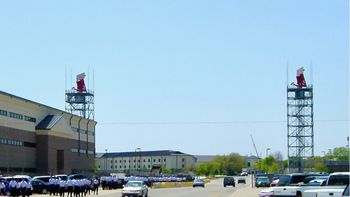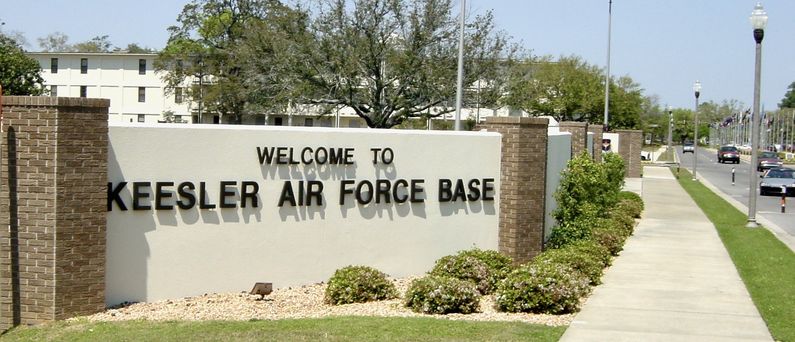Keesler Air Force Base
|
Establishment(Text adapted from USAF Fact Sheet) Congress initially appropriated $6 million for construction and $2 million for equipment. By the time the War Department allocated the funds in April 1941, the projected cost had risen to $9.6 million. On 14 Jun 1941, the U.S. Army Corps of Engineers awarded Newton, Glenn, and Knost Construction Company and J. A. Jones Construction Company contracts totaling $10 million to build Biloxi's technical training school. WWII Training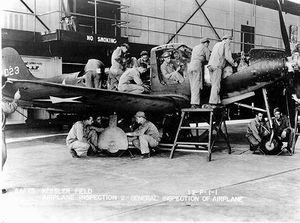 Technical training school personnel began arriving at Keesler Field in mid-July 1941, primarily from Chanute Field, Illinois. The new academic buildings were still under construction when the Airplane and Engine Mechanics School opened. Basic Branch students received instruction in five barracks buildings; Instructor Branch students were assigned to temporary classrooms set up in commandeered circus tents. In mid-1942 the Army Air Forces directed Keesler to focus upon the training of mechanics for B-24 Liberator heavy bombers. The school received its first B-24 in late September 1942. Six more arrived shortly thereafter, and specialized B-24 maintenance training began on 19 Oct 1942. The rapid buildup of heavy bomber units overseas demanded additional aircrew, and Keesler was tasked to assist in the spring of 1944. A B-24 Copilot School began operation in July, and its curriculum was expanded to include B-32 copilot training in October. The need for B-24 crews had also diminished, and Keesler stopped training B-24 copilots two months later.
Post World War II In late May 1947, the AAF announced plans to move its Radar School from Boca Raton, Florida, to Keesler. The Radar School officially arrived on 14 Nov 1947, making Keesler responsible for operating the two largest military technical schools in the United States. The Airplane and Engine Mechanics School and the Radar School were consolidated on 1 Apr 1948. In September 1947, the United States Air Force became an independent branch of the armed services. Keesler Field was officially redesignated as Keesler Air Force base on 13 Jan 1948. In early 1949, Air Training Command decided that Keesler should focus its efforts on teaching radar, radio, and electronics maintenance and repair. To make room, the airplane and engine mechanics courses had to be moved elsewhere. Especially since the Air Force also planned to transfer the Radio Operations School to Keesler from Scott AFB, Illinois. In addition to training radio operators, Keesler was to begin teaching air traffic service technicians; aircraft approach controllers, ground radar mechanics, and radar repairman/ground controlled approach specialists. The last mechanics training courses had moved to Sheppard AFB, Texas, by November, and it was at this point in the base's history that Keesler became known as the "Electronics Training Center of the Air Force."
Cold War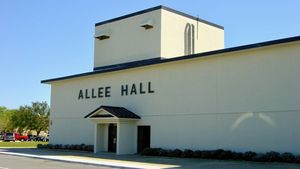 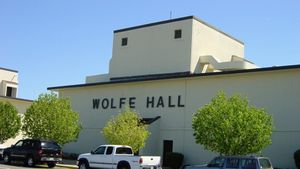 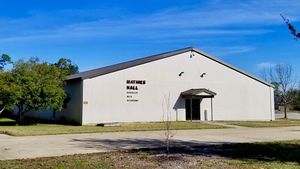  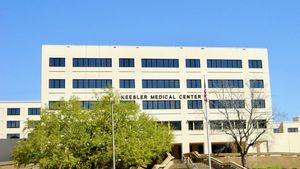  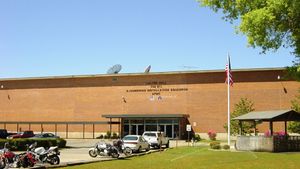 In August 1950, Keesler embarked on a major rebuilding program and the first phase of this project called for the construction of a new electronics laboratory, barracks, and a dining hall for a total cost of $14 million. In 1951, Congress appropriated an additional $44 million to complete Keesler's reconstruction. Plans included four two-story academic buildings (later named Allee, Dolan, Thomson, and Wolfe Halls), a 352-bed hospital, modern family housing units, and a three-story dormitory complex dubbed "the triangle" because of its distinctive layout. Since August 1948, the 3380th Technical Training Wing had controlled all base activities. On 1 Jan 1959 Air Training Command redesignated the wing as Headquarters, Keesler Technical Training Center (KTTC). At the same time, the training group was redesignated as the 3380th Technical School, USAF, and all of its subordinate student squadrons were renamed school squadrons. By 1960 the school at Keesler had earned a solid reputation for high technology training, offering courses in radar, communications, and electronics. Many of the base's small World War II-era structures were torn down and replaced with spacious, multistory schoolhouses, such as Bryan, Jones, Hewes, Maltby, and Cody Halls. On 1 Jul 1969, Keesler’s student load peaked at 14,000. Keesler remained the largest training base within ATC throughout the 1970s, and it continued to stay on the cutting edge of electronics technology, instructing students in new systems such as the worldwide military command and control system and the 407L radar system. The school was the country's main supplier of electronics technicians.
Technical Training in the 1950s-1970sTechnical Training at Keesler evolved into a well-defined system with three major components, a student component, an instructional component and a support component. The student component was governed by a "Rope" system whereby a hierarchy of student supervisors was established to govern student activities. These student supervisors were usually prior service with two or three stripes and were identified at a glance by a colored and braided rope hung over one arm. The rope color defined the relative rank with the white rope being the top level and the red being the lowest level. The "Ropes" were responsible for seeing that the students got out of bed in the morning, formed up and marched to meals, formed up and marched to & from classes. The "Ropes" also supervised work details and work parties. 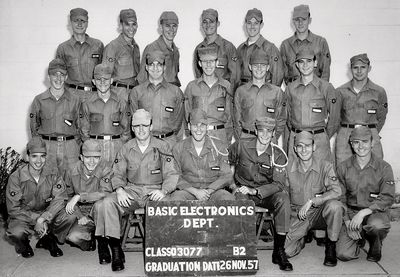 The instructional component centered around the individual instructor, the instructor supervisor and the course supervisor. Basic electronics instructors were usually experienced civilians while instructors for specific equipment were usually drawn from experienced military technicians in the field who had superior knowledge of that equipment. The job of converting a technician into an instructor fell to the Keesler Instructor Training Course where that transformation was accomplished by master instructors. The classroom instructional day was usually six hours long with a 10-minute break every hour. The length of each course was governed by the difficulty of the subject matter and ranged from just days to a year or more. Courses could operate on up to three shifts a day, A shift, B shift or C shift. Entry level electronics courses were usually divided into two phases, the first phase covered electronics fundamentals and that phase was common to most of the electronics courses. The second phase was specific to the equipment the student would work on and contained hands-on instruction on actual equipment. The first phase was known as "Fundamentals" and the second as "Sets". The support component included the normal base support facilities including food service, medical facilities, security and fire protection. The coordination and delivery of the support services fell to each squadron commander and the first sergeant who were also responsible for more formal disciplinary actions. If you were called to see the first sergeant you were probably in trouble and interaction with the squadron commander was probably limited to Saturday morning inspections. At the end of each course each entry-level course graduate would receive orders sending them to their first assignment. Post Vietnam WarKeesler's student load dropped to an all-time low after the Vietnam War ended, and Air Force officials responded to changing social conditions by reexamining the school's teaching functions. As a result, Air Training Command inactivated the USAF School of Applied Aerospace Sciences on 1 Apr 1977 and replaced it with the 3300th Technical Training Wing. Two weapon systems training programs gained attention during the early l980s. One was the airborne warning and control system (employed aboard the E-3A Sentry aircraft), and the other was the BGM-109 ground-launched cruise missile. Keesler's air traffic control program also garnered its share of publicity - especially after the Professional Air Traffic Controllers Organization walked off the job in August 1981. When President Ronald Reagan fired the strikers, it was Keesler-trained military air traffic controllers who stepped in to keep the nation's airways flowing smoothly. Driven by deep defense budget cuts and the resulting closures of Chanute AFB, Illinois, and Lowry AFB, Colorado, the first course transfers arrived in 1990, as Keesler acquired Chanute's weather forecasting courses. Lowry's metrology and precision maintenance electronics laboratory (PMEL) training program followed in 1992-1993. A major change occurred on 1 Jul 1993, when Keesler Training Center inactivated, and its lineage and honors retired. On the same day, the 81st Tactical Fighter Wing, formerly located at RAF Bentwaters, United Kingdom, was redesignated the 81st Training Wing and concurrently activated to serve as Keesler's host organization. At the same time, HQ USAF redesignated Air Training Command as Air Education and Training Command (AETC), and the command activated Second Air Force and stationed it at Keesler. Its mission was to oversee all technical training conducted within AETC.
HurricanesTwo major hurricanes have impacted Keesler along with several lesser hurricanes. The most impactful were Hurricane Camile in 1969 and Hurricane Katrina in 2005, both category 5 hurricanes. 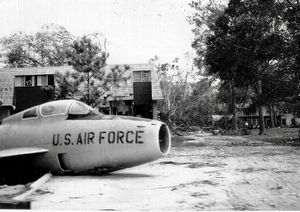  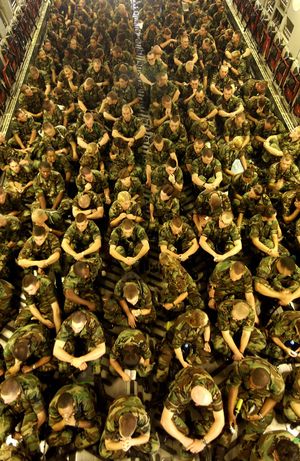 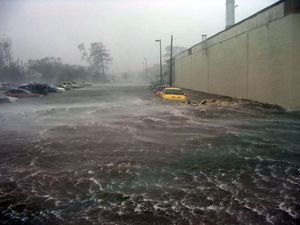 Hurricane Camille was a Category 5 hurricane before it made landfall in Waveland, Mississippi early on 18 Aug 1969 with a pressure of 900 mbar. Camile had winds of 190 mph and a storm surge of 24 feet. Camile destroyed or damaged nearly everything on the Mississippi coast along U.S. Highway 90 and severely damaged the bridge across Biloxi Bay. Except for the Waveland and Long Beach areas major storm surge damage was limited to the area south of the railroad tracks that run along the coast. Keesler was spared major damage from the storm surge and residents who had sheltered in Brian Hall were able to leave the next day and return home but all were without power and most without running water. Hurricane Katrina was also a huge Category 5 hurricane but made its second landfall in Plaquemines Parish, La., as a Category 3 storm with winds as high as 127 mph. At Biloxi, Katrina had winds that gusted to 140 mph and a storm surge that had peaked at 34 feet in Bay St Louis, Mississippi. Massive property damage occurred throughout Biloxi and Gulfport and 50% of Keesler was flooded with up to five feet of water. Especially hard-hit was the low lying old housing area including the commissary and the Base Exchange. Of the 1,820 military family housing units, 1,067 were destroyed or unusable. The total damage to Keesler exceeded $1 billion. Training was resumed quickly and by 20 Oct 2005, all enlisted initial skill courses were approved to be taught and by the end of 2005 almost all training facilities, dining halls, and student dorms that had sustained damage became fully operational. Reconstruction of the base would take longer, in September 2010, five years after Hurricane Katrina, the base and wing successfully completed the almost one billion dollar reconstruction project.
Current StatusCurrently, the 81st TRW at Keesler AFB is one of the largest technical training wings in the United States Air Force and continues to trained thousands of airmen, and hundreds of Air Force officers as well as military members from the Navy, Army, Marines, Coast Guard and allied nations. The 81st TRW now trains civilian and military members in specialized skills ranging from avionics maintenance, comptroller, radio and radar systems maintenance, communications electronics, computer systems, air traffic control, weather, personnel, command and control systems.
See Also: Sources:
Links:
Visited: 1957-2021
| ||||||||

